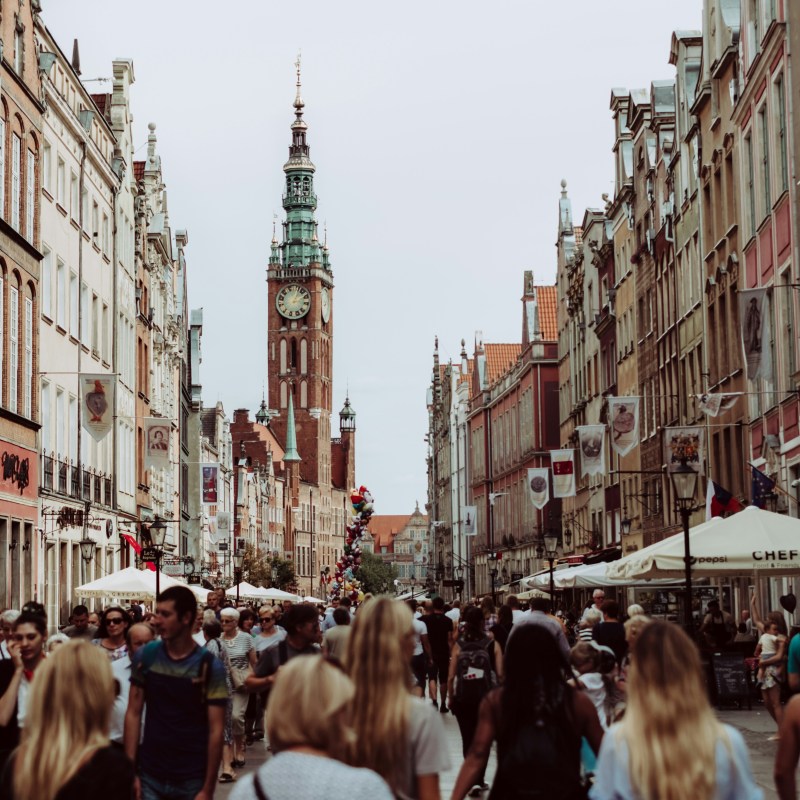
If you’ve ever been to Barcelona, Spain, you might have seen signs saying ‘tourists go home’. I’ve seen newer headlines that covered locals wielding water guns at tourists.
Videos by TravelAwaits
Both are ongoing symptoms of overtourism, which is a growing problem—especially in Europe.
From protests from locals to skyrocketing fines for visitors, tourists are feeling the impact of overtourism in many hotspots around the world. It can be a frustrating experience for everyone involved.
Especially for tourists who seem to be in the wrong place at the wrong time. Even when they don’t do anything wrong and they’re spending their hard-earned money, they tend to take on the brunt of overtourism sentiments.
As someone who lives in the center of a city battling overtourism (Barcelona), it’s not fair for any group involved.
So let’s dig into the world of overtourism, exploring how it starts, why it isn’t your fault, and which places you might need to cross off your list as a tourist. (Plus, alternative options!)
How does overtourism happen?
Want to hear the messed up part about Barcelona’s current overtourism problem?
It’s the result of an elaborate and multi-decade plan from the local government. While officials certainly didn’t plan on meteoric and unchecked growth, tourism as it exists today has permanently impacted the city from a social, cultural, and economic perspective.
Plans to boost tourism usually involve improving public transportation, expanding ports to welcome cruise-liners, and granting private licenses to hospitality businesses.
Once the ball gets rolling, it can be hard to stop. And it can yield serious problems for locals.
Unchecked growth in tourism creates housing problems, boosting scarcity and prices. Airbnbs, for example, helped revolutionize the concept of lodging. But irresponsible hosts who don’t obtain the appropriate licenses for their rentals exacerbate existing housing problems.
In cities with historical appeal, mass tourism also clogs and degrades historical neighborhoods. Unchecked growth also tends to put tourism revenue into a few select hands, usually through guide groups, hotels, and restaurant chains.
Oh, and pollution. From planes to cruises, overtourism dirties a city’s air quality and water quality.
If you want to steer clear of cities and areas that are going through a period of overtourism, then consider visiting an alternative option (listed below). The first three locations have been battling overtourism for years, while the next three are creating plans to minimize its impact in the next decade.
Places battling overtourism
Venice
If you’ve visited Venice, you might have wondered where its locals live. Unfortunately, Venice is a prime example of how overtourism makes a city unlivable and drives away its native population.
For decades, the city has attempted to regulate its tourism numbers. As of June 1, 2024, the city now limits the group size to 15, with tourism authorities also rolling out data collection plans to better measure tourist impact.
Alternatives: Verona or Padua
Barcelona
For well over a decade, Barcelona and its mayors have been attempting to curb the growth of tourism in the city.
One of the more robust actions being taken now is to rescind 10,000 Airbnb licenses—though I have no idea how that happens when homeowners have full reign to set up an Airbnb account right now. The city has also banned Uber in an attempt to stop catering to tourists.
I live in the center of this city and can tell you—the vibe is not good for tourists as of summer 2024. As in, I’ve started to recommend my friends and family head elsewhere.
Alternatives: Girona or Valencia
Amsterdam
Amsterdam has been attempting for a decade to lower the number of tourists that visit—and to change its tourist demographic.
The city has a reputation for partiers and young travelers thanks to its weed-friendly and shrooms-friendly cafes, along with its red light district. This has led to a ‘low quality’ tourist problem.
That means that those who show up simply want to party—and they aren’t worried about taking care of the city or respecting it while they do. The former head of marketing for Amsterdam even went on to blame low-cost airlines like Ryanair.
Alternatives: Hamburg or Rotterdam
Places looking to curb tourism
Iceland
I’m stunned to hear that Iceland is taking a hardcore approach to start fighting over-tourism—mostly because I remember seeing and hearing non-stop ads from WOW Air back in the 2010s. Seemingly overnight, Iceland was on the map for global travelers.
After it went bankrupt, the country saw lagging tourism numbers. But they’ve since risen—enough that Norway now wants to impose a tourism tax. Much of this push seems to be focused on Iceland’s goal of being carbon neutral by 2040.
Machu Picchu
Located high in the Andes Mountains, the Incan city of Machu Picchu is high on many tourist lists. But Peru’s government has been working overtime in the last few years to limit the destructive impact of tourism.
This year, the government lowered the number of daily visitors to 3,500—half of what it was prior to the pandemic. Also, tourists aren’t allowed to wander anymore. All guests must stay with their tour groups.
Mount Everest
Did you know that the vast majority of satellites that humans have launched into our atmosphere are still there? That’s right. Our planet is surrounded by a halo of trash.
It always reminds me of how Mount Everest must look. Our planet’s highest peak has been a tourist destination for a few decades—a deadly one, at that.
Not only will you find gear littered around Mount Everest, but you’ll even find corpses. Because climbing the mountain is so dangerous, those who fall along the way are left where they lay. But the real issue is trash and pollution. There are literally tons of waste located around base camp, which continues to accrue year after year.
